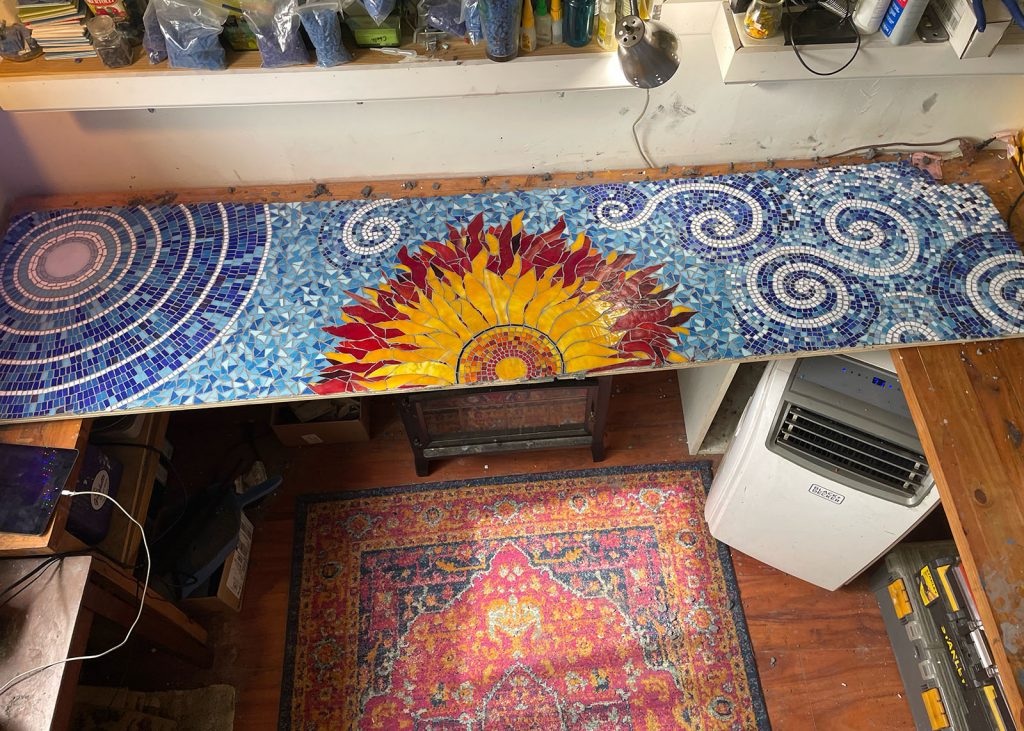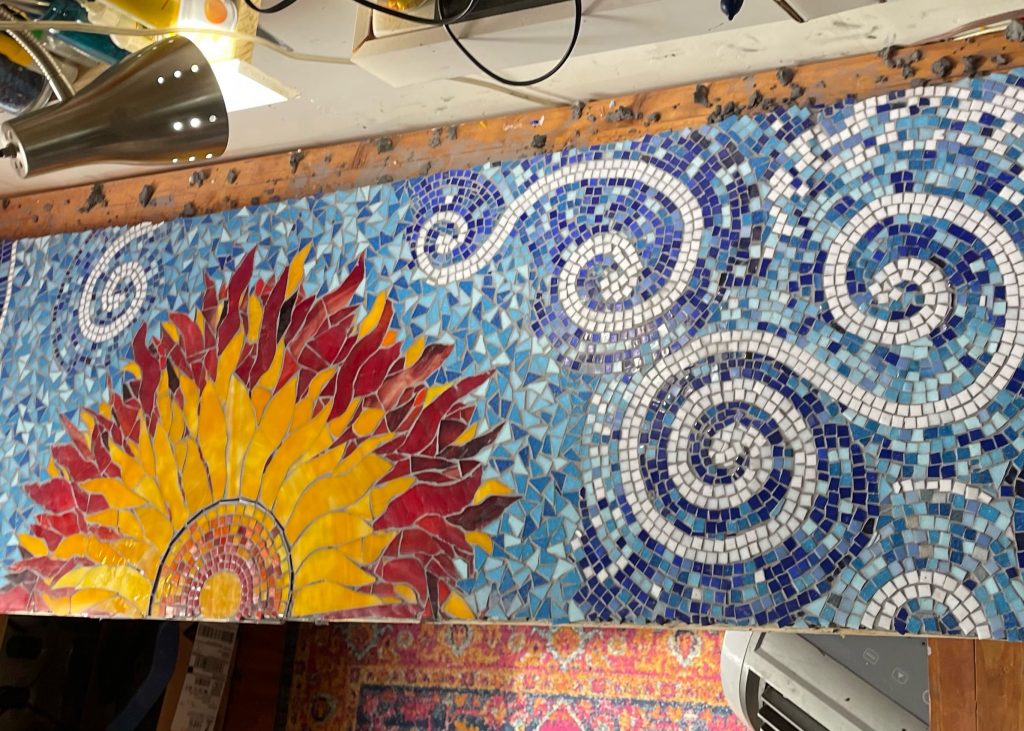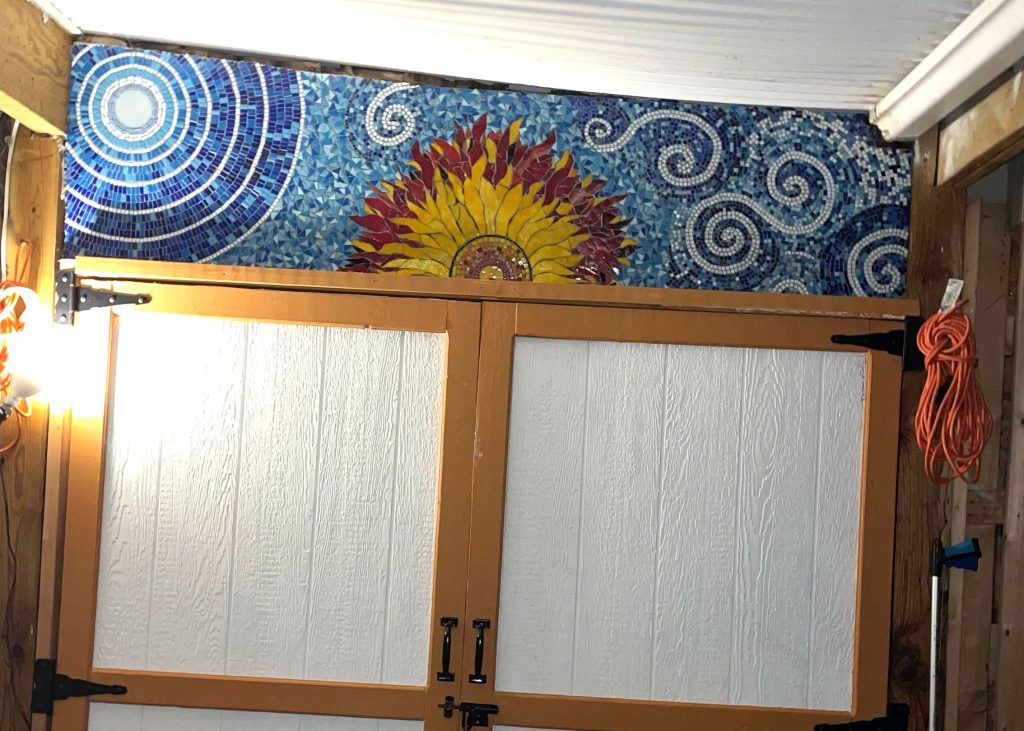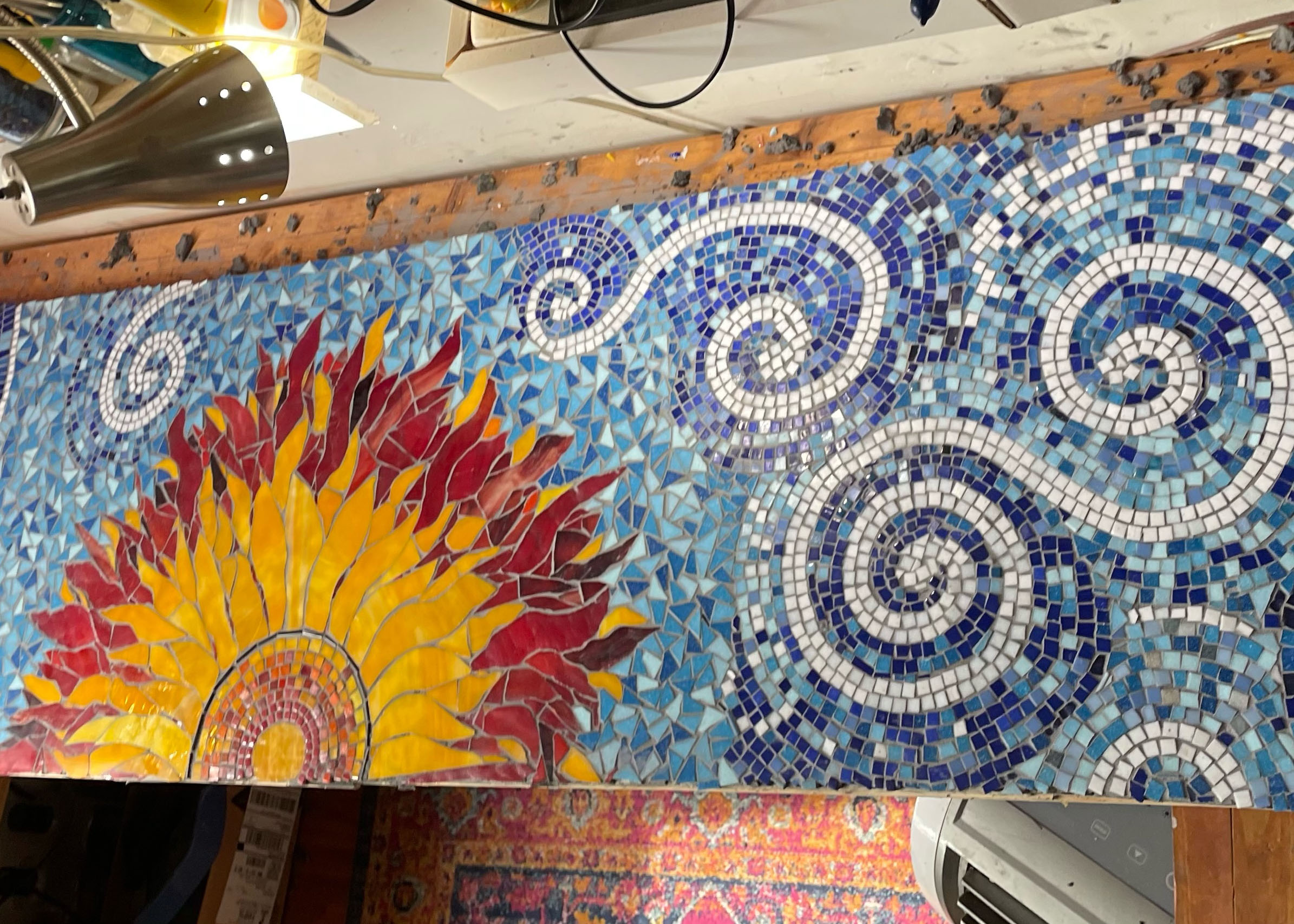First-time mosaic artist John Schroeder’s Celestial Transom Mosaic is something of a tour-de-force in combining different styles of andamento into a seamless composition.
Kids, Don’t Try This at Home
Combining different styles of andamento in a mosaic is something I would never recommend to a first-timer.
It’s easier to figure out one way of working than two or three ways, and figuring out how to transition between modes of working in the same composition is an advanced skill.
Combining modes of tiling makes things more difficult, and people usually botch it, and the discontinuities are jarring and distracting.
Before I can tell you what is exceptionally well-executed about this mosaic, I need to clarify some terms that I have been using sloppily.

Opus Musivum
Andamento is an Italian word that means progress or trend, how something develops.
In mosaic, we use the word andamento to mean the visual flow and direction created by rows of tile.
The style of andamento is called an opus. There are several types of traditional andamento with Latin names.
Opus Musivum is the style where the background is made from concentric rows around the figure. The swirls of wind on the right side of John’s mosaic are rendered in opus musivum.
I am very much guilty of saying “andamento” when I mean “opus musivum,” because I think this style is the most effective at creating a sense of motion and increasing visual interest.
There are other traditional styles, such as Opus Regulatum, which means a rectilinear grid of squares or rectangles or a staggered grid like a brick wall.
Opus regulatum does not create a sense of motion in mosaic or increase visual interest in an objective sense.
TIP: Irregularity or a variable pattern requires more looking to fully see, while uniformity is easier to look past without missing anything.
Problems with Regulatum
Opus regulatum has another issue:
A background in the form of a grid risks looking more like an architectural covering executed with efficiency in mind than art.
In Art with a capital A, the artist doesn’t waste an opportunity to make the art more interesting. Efficiency of execution rarely if ever takes precedent.
If you do have to be concerned about efficiency in a situation such as a large mural on a short schedule, then consider Opus Paladanium (an assortment of irregular polygons) instead of a grid of squares or rectangles.
Opus paladanium can be executed almost as quickly as a grid, but it creates more visual interest.
TIP: If you are making a mosaic background in a grid because there is so much of it to make, then consider the possibility that your figures need to be larger or more numerous. One basic rule of composition is to crop out excess background.

Creating A Sense of Motion
A sense of motion is best created using a combination of concentric rows around figures (opus musivum) and rows radiating out from figures.
The rows of full-sized tesserae relate geometrically to the figures and start at the figures.
There aren’t small tesserae inserted around the figures to make them fit into a background that has its own independent andamento.
My recent Blue Crab mosaic uses concentric and radial rows in combination, although the complex motion of all those legs results in a background that has more vibration than flow.
John uses opus musivus with great effect to create the swirling winds on the right side of his mosaic.
Seamless Transitions
John’s mosaic is well executed in many ways: color variegation, color contrast, grout gap width, iconic designs, a composition that fits an odd-proportioned area.
What makes it downright impressive is that he also used three different andamentos that transition seamlessly.
Consider the detail photo below:

First there is the Opus Sectile (shapes cut as single pieces such as done in stained glass artwork) that John used to render the rays of the sun. Then there is the Opus Paladanium of sorts using only triangles. Then there is the Opus Musivum of the billowing swirls of wind on the right.
Now look at how seamlessly these three areas transition or fit together. That requires some attention and planning and looking at the larger composition as you positioned tile.
Most novices would be so consumed with getting proficient at cutting and positioning tile that they wouldn’t have much attention left over for these higher concerns.
Installed

John installed his mosaic on the transom area above a set of double doors that open his small workshop. This is the exterior of the shop, and there is a significant eave/porch sheltering the mosaic from precipitation.
All that being said, this location is still the exterior and not climate controlled. For that reason, a concrete backer board was used instead of plywood, which swells and contracts with changes in humidity.
Since the mosaic wasn’t subjected to precipitation, John used Hardiebacker instead of plain concrete backer board, which is crumbly at the edges.
Hardiebacker is recommended for indoor use only, but it you thoroughly paint it on the back and sides and never sit it on the ground or where water can stand, you can use it outdoors for things like mosaic table tops and mosaics under porches.
Happy Place
This mosaic might look like it is too ornate for its humble surroundings, but a shop like that is one of the happier places on Earth.
Backyard workshops that open up with a double doors or garage door make incredible studios for artists who work in multiple mediums, especially those that generate dust or fumes.
The sunlight and air and the ability to step back and forth between inside and outside make a studio like that preferable for any medium as long as the weather is mild.


Leave a Reply